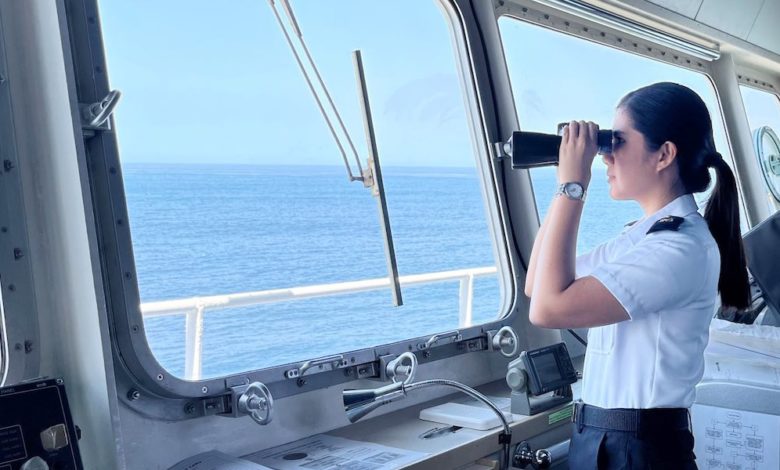You are here
Sourcing the next generation at sea
Sourcing the next generation at sea
June 4, 2024 https://splash247.com/sourcing-the-next-generation-at-sea/
How will managers ensure they have enough skilled staff in the years ahead? The latest from our new shipmanagement magazine.
It’s a theme that appears on many pages of this magazine – the risk of not having enough suitably skilled workers at sea going forward. So just where are the world’s managers looking to fill the ranks in the years ahead?
Crewing specialist Danica’s latest seafarer survey suggests the crew employment market has tipped in favour of seafarers.
“The root cause for today’s wage increases is the combination of a general shortage of very competent seafarers and a better financial situation for most vessel owners,” says Henrik Jensen, CEO of Danica Crewing Specialists. “And, with a surplus of job offers, seafarers can afford to be picky.”
Seafarer shortages are more evident in certain ranks, according to Danica. The survey identified bosuns, cooks and fitters as being in high demand.
Where in the world?
So where to look for more seafarers? Shipping must move away from sourcing crew from the less developed countries simply because such countries have traditionally provided a cheaper alternative and the most fertile recruiting ground, argues Mark O’Neill, the CEO of Columbia Shipmanagement in conversation with Splash. The focus must now shift, he says, to attracting talent worldwide and enhancing the standing, career, experience, rewards and variety of a life at sea and thereafter a maritime career ashore.
“Poverty must not remain the most significant recruitment factor for attracting seafarers to a life at sea,” O’Neill says.
Quite so, concurs Ian Beveridge, the CEO of Bernhard Schulte Shipmanagement (BSM).
“However,” he warns, “the allure of a maritime career has diminished in many traditional seafaring countries, leading to challenges for maritime academies in filling their classes.”
Africa
BSM’s perspective sees significant potential in Africa emerging as a major source of seafarers. Its crew pool already includes individuals from Ghana, Cameroon, Gambia, Nigeria, and Egypt.
“The traditional source markets will continue to be the backbone, but we recognise the importance of being open to emerging markets that contribute to the diversity and quality assurance of the crew pool,” Beveridge tells Splash.
For John Michael Radziwill, the CEO of pools giant CTM, the most promising areas for finding the next generation of crew are in Southeast Asia in countries such as Vietnam, Indonesia, and Cambodia.
“Well-skilled, mid and lower ranks of crew can already be recruited from there as cultural and language barriers have been coming down,” Radziwill says, while cautioning that for higher ranking crew this is not so widely available yet.
“Africa will be the next frontier as the population is young and growing rapidly, but for the time being it lacks the education infrastructure,” Radziwill reckons, adding that South America could also emerge as a new source.
Southeast Asia, Africa, and South America are also very much being targeted by OSM Thome. “This strategic direction not only broadens our recruitment horizons but also aligns with our commitment to diversity and adaptability in meeting the evolving needs of the maritime industry,” says the company’s chief operating officer, Olav Nortun.
Poverty must not remain the most significant recruitment factor for attracting seafarers to a life at sea
“To ensure Africa becomes a viable pool of seafarers for generations to come, managers need to avoid the temptation to rely solely on manning agents and create their own solution, and ensure that the solution is sustainable for years to come,” stresses Craig De Savoye, commercial director at Protection Vessels International, who has seen too many manning agents spring up there in recent years who make promises that are, he says, simply unachievable.
The missing 50%
Rather than looking for new regions, Ioannis Stefanou, managing director of shipmanagement at Wallem, says shipping must first do much more to attract seafarers from the remaining 50% of the population of regions where seafarers are already coming from, by attracting more female seafarers into the industry.
“Promoting diversity at sea is the right thing to do, and it also makes great business sense,” says Stefanou.
Quite right, agrees Andrew Airey, who heads up Thai manager, Highland Maritime.
“The most interesting and exciting new crew resource has been staring us in the face for a long time. Female maritime staff present a huge potential resource and opportunity to bring fresh thinking and culture to the onboard and onshore management of vessels,” Airey says, adding: “With the future of semi and fully autonomous vessels, what we need is a combination of male and female brains and creativity.”
Splash readers can access the full magazine for free by clicking here (https://issuu.com/sinoship/docs/shipmanagement_market_report_2024?fr=sMj...)

